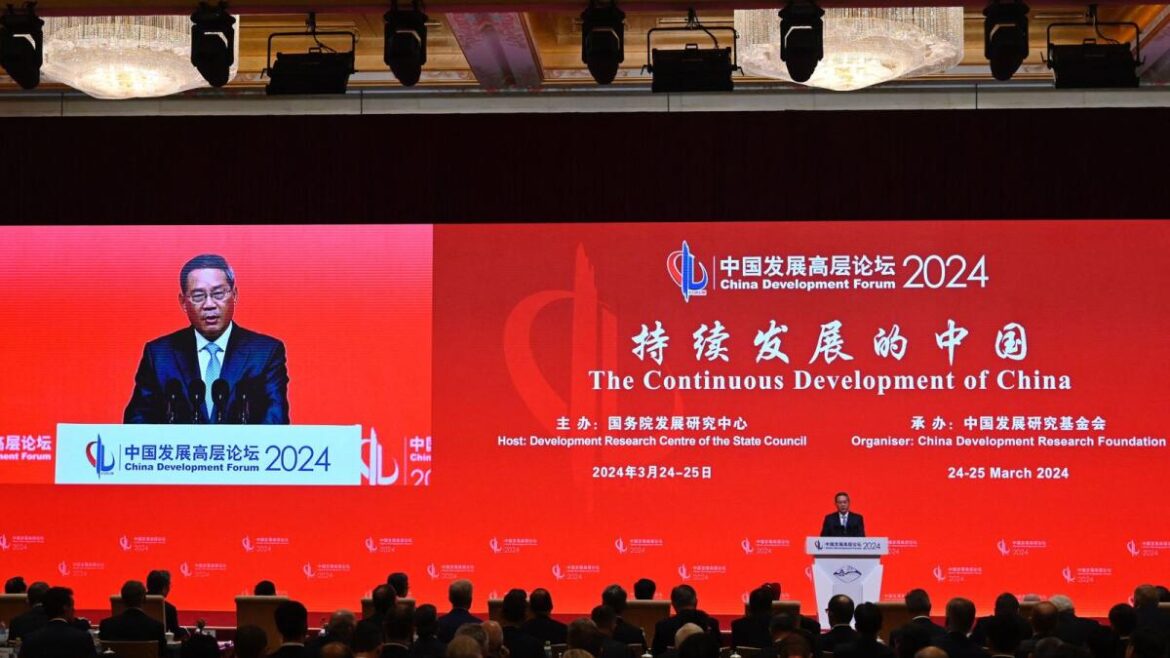By Staff Reporter
Amid an onslaught of grim climate news, China’s recent decision to pursue a faster green transition is a rare bright spot. In early March, at the annual National People’s Congress, Premier Li Qiang announced that the country would accelerate investment in clean-energy projects. The plan is for a “new trio” of industries – solar panels, electric vehicles (EVs), and lithium batteries – to drive economic growth, replacing the “old trio” of clothing, furniture, and appliances. Although investment in the targeted industries will not be enough to reverse the country’s ongoing economic slowdown, the West should appreciate the implications of Li’s announcement.
A global green transition is already well underway; at this stage, countries and firms are largely on board with the shift to clean energy. According to the International Energy Agency, annual additions to renewable capacity increased by nearly 50% in 2023, to 507 gigawatts, the fastest growth rate in the past two decades. The European Union, the United States, and Brazil, in particular, installed record amounts of renewable-energy capacity. But China experienced the largest growth by far, commissioning as much solar PV in 2023 as the entire world did in 2022, and increasing its wind capacity by 66% year on year.
China’s decision to ramp up spending could further accelerate this epochal shift and help achieve long-term climate goals by bringing forward the peak in fossil-fuel use and lowering greenhouse-gas emissions. Moreover, it suggests that place-based industrial policies are facilitating, not impeding, decarbonization. US President Joe Biden ushered the world into a new era of industrial policy when he passed his $800 billion Inflation Reduction Act (IRA), which includes $391 billion in energy and climate spending, and his $1.2 trillion Bipartisan Infrastructure Law (BIL). This strategy pushed the EU to implement its own raft of green subsidies. And now, China is addressing its economic woes by channeling even more resources into decarbonization.
At the same time, an increased supply of low-cost green products from China – a likely outcome of the country’s bet on emerging technologies – would not flow to the US, owing to its embrace of industrial policy. The US government has already imposed tariffs on strategic Chinese imports. And with the IRA and the BIL pumping massive sums into domestic clean-energy manufacturing and deployment, the Biden administration is considering new protectionist measures to prevent China from undercutting the US market.
This is frustrating for ardent advocates of free trade, as it means that cheap Chinese solar panels, EVs, and batteries will not be available in America any time soon. A Donald Trump victory in November would only make things worse: the former president has proposed a staggering 60% tariff on all Chinese imports.
Although the energy transition is coming at a high price for Americans, it is a price worth paying. By defending its domestic industries, the US government will likely divert Chinese products to other countries, especially in the developing world, which would allow consumers to buy clean-tech products at low prices. More importantly, if developing countries seize this opportunity, they could accelerate their own green transitions.
For example, Indian Prime Minister Narendra Modi, whose plan for reaching net-zero emissions by 2070 is highly insufficient, should take advantage of China’s green-tech surge. In the short term, that means using Chinese products to plug the gaps in India’s clean-energy industry. Modi should also convince Chinese companies to build additional production facilities in India, which would facilitate technology transfer, create jobs, and lower the cost of green tech.
African leaders should likewise electrify their economies using China’s green products and technologies. Just as many African countries have leapfrogged to mobile networks, skipping landline development, they must do the same with clean energy, bypassing fossil fuels. While certainly a challenge, such an approach is well-suited for a continent with abundant solar and wind resources and a need for distributed-energy solutions. Moreover, African countries with a large supply of rare earths should work with Chinese firms to move up the value chain and create more jobs.
Whenever CEOs and policymakers meet at climate conferences or in Davos, a common refrain is that the green transition must be just. That would require $1 trillion in annual clean-energy investment in low- and middle-income countries – a seven-fold increase from current levels. While there is a desperate need for more financing, China’s increased investment in clean energy could be an important part of the solution.
Ultimately, China and the US (as well as the EU) must reach an agreement on what constitutes fair and free trade of green goods. But in the meantime, given the existential imperative to achieve net-zero emissions, we should welcome China’s investment plans, even as we worry about their implications for US industry. For now, I can drive an American-made EV from Ford or Tesla, but I hope one day to have the option of purchasing an EV built by China’s BYD. Either way, I will be on the road to a less polluting future. — Project Syndicate


